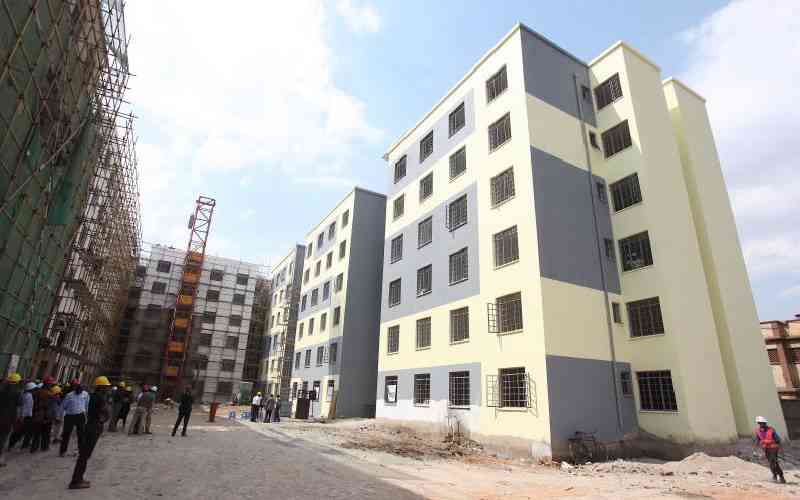What is the current state of housing in the country?
Over the years, we have seen a constant deficit figure of 150,000 houses annually against a production of 50,000 units. I tend to dispute the second figure. I think the annual output is much higher than this. If you look around, you will see a lot of new housing projects that are adding more stock to the market. We are working on a new methodology that will give proper statistics that will guide both the government and developers.
Developers argue that they could do more if the government provided them with incentives. Is this something you are considering?
Yes, we are. One of the things we are keen on is infrastructure development in areas where developers have an interest. This will help in two ways. First, a developer will not have to spend money to put up prerequisite infrastructure such as roads or sewer lines. Every cent from the developer should go into the actual erection of houses. Secondly, we have noticed that land appreciates greatly after infrastructure development, translating into better returns for the land owner. For example, we have seen a quarter acre with infrastructure fetching more than an acre of un-serviced land. That would encourage more people with idle land to free it for development.
But doesn’t appreciation in land costs mean higher cost of houses?
Property prices in Kenya are market-driven since most houses are provided by private developers. However, Kenyans, too need to have a culture of saving to own houses. A person out of college on a first job can save some funds that can go towards a mortgage deposit for a small house such as a bedsitter. Later on, he can use the house as collateral for a second home and so forth. I call this the housing ladder. It is much better than waiting for prices to come down, something that may not happen soon.
What is the ministry doing to make it easier for different actors in the housing sector to deliver on their mandate?
We have put in place a number of interventions, key among them is the formation of a housing contact group. This will be an open forum where developers, financiers and even the civil society can come together and lay down their issues for interrogation. For example, the financial sector may need the right policy framework before releasing funds. A developer may need information on areas where the government is planning infrastructure development for ease of construction. We hope to get a guiding document on this before the end of the year.
Where are we as far as slum upgrading is concerned?
The process is still on course. Kibera slum upgrading project in Soweto is almost complete. This includes the redevelopment of Soweto East Zone ‘A’ where 822 housing units, a social hall and youth centre. We are undertaking the construction of 462 housing units in Mavoko, Machakos, which we intend to complete by the end of this year. Marigu-ini project in Mukuru slums is currently in the documentation stage. We are also undertaking construction of infrastructure in selected slums and informal settlements in Nairobi, Eldoret, Machakos, Kisumu, Garissa and Malindi.
You are one of the two lady architects serving as principal secretaries within the ministry. What does this portend for women professionals?
I count myself fortunate to have risen through the ranks to the current position. I have had only one employer in all my working life – Public Works. I was in the second lot of lady architects to qualify as such. I am happy to see more ladies training in this field and undertaking big projects. The future is bright.
 The Standard Group Plc is a
multi-media organization with investments in media platforms spanning newspaper
print operations, television, radio broadcasting, digital and online services. The
Standard Group is recognized as a leading multi-media house in Kenya with a key
influence in matters of national and international interest.
The Standard Group Plc is a
multi-media organization with investments in media platforms spanning newspaper
print operations, television, radio broadcasting, digital and online services. The
Standard Group is recognized as a leading multi-media house in Kenya with a key
influence in matters of national and international interest.
 The Standard Group Plc is a
multi-media organization with investments in media platforms spanning newspaper
print operations, television, radio broadcasting, digital and online services. The
Standard Group is recognized as a leading multi-media house in Kenya with a key
influence in matters of national and international interest.
The Standard Group Plc is a
multi-media organization with investments in media platforms spanning newspaper
print operations, television, radio broadcasting, digital and online services. The
Standard Group is recognized as a leading multi-media house in Kenya with a key
influence in matters of national and international interest.








